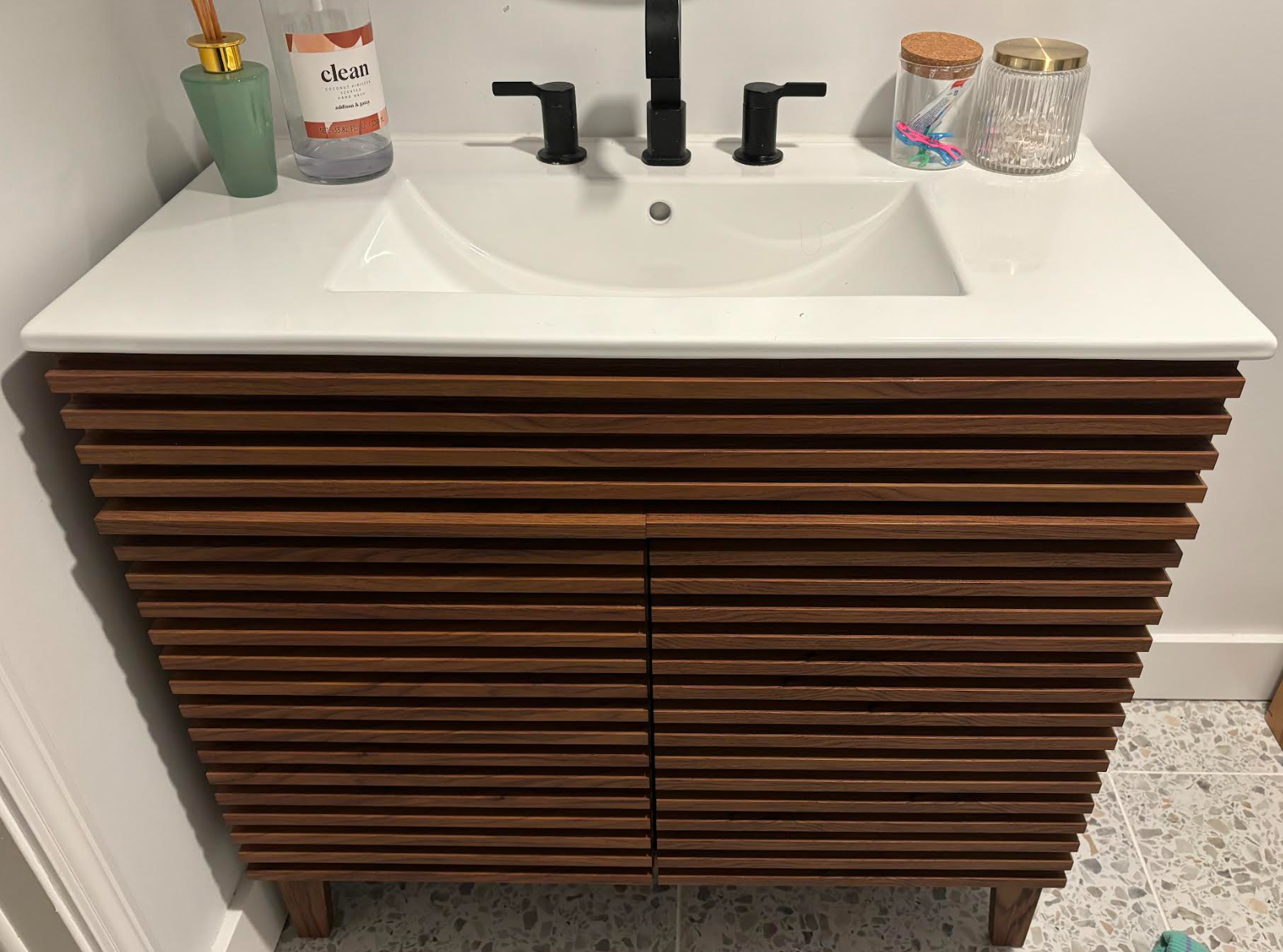
I remember watching the news back in the 90s when Walmart was spreading across the country and there was the lament of small-town stores shutting down. We are way past that time for retail stores. Now, Walmart is just assumed since they are in every part of the country and will pretty much always have the lowest prices on the general items you may go looking for.
However, no one looks to Walmart to bring fresh ideas or character to a city. Walmart’s job is to provide cheap prices for the basics.
There can be debate on whether Walmart is a good thing, but that isn’t what this is about. This article is just about how the internet accessed through google is Walmart. Search Engine Optimization (SEO) started this process. Websites constantly battle for the optimizing content that Google will align with which drives writing to target key words and to connect with the established norms on a certain topic.
There are definitely those who have not loved this direction for the internet.
How SEO consolidates influence
The simplest way that the Google algorithm consolidates influence is that is starts with the domain authority of the biggest websites. Larger websites with more clout and links are now massively ahead of anyone starting out in a particular space. Similar to Walmart, this isn’t necessarily wrong, but it is a power dynamic that pushes the little guy out to the edge.
For any entrepreneur or writer, this is a pretty incredible hill to climb. There are businesses that help smaller operations get links to build influence, but it needs to be a pretty focused target to break through. The weight of the huge sites vastly outweighs the ability of smaller sites to be gain influence.
Additionally, many large sites have staff devoted to churning out content to target key words and continue to hold the grip on the top search spots.
Insert AI at the top of the Search Results
Now Google provides its own AI generated results at the top of the page for the vast majority of searches. This just further consolidates the eyeballs on the internet to a limited source. Anything sourced by AI is obviously going to be based on an algorithmic search of the internet, which once again, similar to Walmart, may not be a bad thing, but it does give a certain type of result every time.
The result will be encyclopedic in nature and not have any new insight for the reader. This is perfect for finding a local Thai restaurant or determining if a book store is open.
Where this needs to be thought through is for someone trying to find some fresh insight on a given topic. Starting with Google may not be the best place and probably hasn’t been for quite some time. New and different ideas are simply buried.

Learning to explore differently
Cool coffee shops and interesting stores have survived and honestly thrived in the era of Walmart. People will always want to find spaces with character and originality. This is true whether it is in the physical world or in digital spaces.
That is a big reason I took over Personal Finance Blogs late last year. I thought it was a great space to give access to original thoughts from people who have enough interest in helping others figure out the challenges of growing wealth that they generate content for the world to read. I would hope to see other sites like this on other niche topics. The goal is to provide a space for people to come to where they know there will be original thoughts.
In the news space, a site like Ground News is a cool option. It provides some independent filtering of the articles out there, but at least lets you see where things are coming from different perspectives. This is different from Google, which is still filtering, but doesn’t tell you anything.
Another thing I gained from taking over the site was an account on X. For a long time, I thought Twitter was just a noisy place where people yelled at each other, and this is probably still very true. However, as I spent some time on the account and found other voices that I liked to follow I realized that it was a pretty great place to find new voices. I have to be the filter, but maybe that is the whole point.
Also, if you challenge yourself to follow some folks that don’t quite align with you politically, it can be a great place to gain understanding of the differing perspectives in the world. We need to challenge ourselves to be a good filter and not only allow in ideas that make us feel good.
Being Intentional Online
The big thing that I’ve learned as I’ve entered a deeper understanding of how the internet functions is that it simply takes more intentionality to really find good, original content online. It takes a bit of digging to discover new voices, but it is very much worth it.
Despite all the junk, there is always amazing content flowing onto the internet. It just takes a little effort to find it and then enjoy the fresh perspectives that are available from all over the world.
You wouldn’t shop at Walmart for everything and so it’s good to think of the internet the same way.
By: Chris Bemis

Discussions of toxic work environments seem to be more common nowadays, but it’s doubtful that this type of workplace culture is increasing. I think that it is more a function of awareness and expectations from Millennials and Gen Z in the workplace. I’ve had the unfortunate pleasure of dealing with several different toxic workplaces in my career and in this article, I hope to shed some light on how to approach these situations based on where you are at in your journey.
What to do with a toxic work environment?
The first thing you are likely to notice in a toxic workplace is that everyone is working around a certain individual or leadership group. At my first job in biotech, it was the CEO of the startup. My boss was terrified to take bad news to him and always stayed late just to avoid the appearance of slacking off. This created a super unhealthy environment and instantly made me question my decision to join what I thought was an exciting startup company.
However, I obviously needed the money since I had a newborn at home and there was a ton of opportunities to learn how to manufacture monoclonal antibodies. I was in a position to take the first of the following reactions to a toxic work environment.
Keep Your Head Down and Get the Value from the Job
It was tough for me to keep my head down and not speak to some of the disfunction that I was seeing. I sense that this is hard for a lot of Gen Z workers as well. However, I didn’t have any position to change things and so the best thing I could do is be a solid contributor and make sure I was not falling into any of the bad culture of the site.
This is key for younger workers since it just takes time to build up the credentials to be heard in most workplaces. When the workplace culture is more toxic it is almost a guarantee that younger workers will be ignored. With this in mind, it is often the best move to simply put in the time and focus on the good things coming from the role until something better comes along.
In this company, by maintaining a positive attitude and being willing to cross train in a few different groups, I was able to survive a 70% layoff. That ended up being a massive payoff since I was then able to learn even more in my final year at the company before I finally moved on.

Look to Build an Island of Sanity
As I’ve progressed in my career, I’ve had multiple situations where I’ve been able to create space within a toxic work environment. My second stop in biotech was at Thermo Fisher Scientific in Austin and the source of the toxic environment there was another mass layoff. There were three groups with different layoff dates that were kept working so that they could collect their severance and then there was the small group of us that had been retained.
On top of this, the company sent the replacement workers from Lithuania to Austin to be trained. It was a disaster for culture.
Thermo was big on metrics and it was very clear what each group needed to do to hit their numbers. For the five of us that were kept in the protein lab, we simply focused on hitting our numbers and kept clear communication with management. We obviously had trouble trusting the organization, but we used our efficiency to buy ourselves freedom from the chaos.
This is the critical principal to creating an island of sanity: narrow your focus and maintain a few close relationships. We couldn’t control the broader culture, but we were able to create a small culture of trust. By maintaining performance, we were able to buy ourselves some peace.
This approach is definitely for someone who has a little more status and experience in their role, but it will 100% improve your outlook when things take a toxic turn at your workplace.

Speak up and Work for Change
This last approach is obviously the one to go for if you have some standing in the organization. However, this also hold significant risk in a truly toxic work environment. If there are controlling leaders that need to be challenged, they may not take kindly to pushback.
It is completely appropriate to evaluate your tolerance for risk before putting yourself out there with leadership that may have shown a history of not being trustworthy.
This brings me to my most recent position where I was a manager of a technical support group at a pharmaceutical company. The company has a very toxic culture of leadership making rash decisions and then not listening to the feedback of the teams required to deliver.
I pushed my management for several months on this topic but was repeatedly told that they had made “commitments to the board” each time I brought up timelines that were completely unrealistic. The unique thing about this situation was that my wife’s real estate business had been booming for several years at this point.
For the first time in my career, I was in a position to open myself up to some more risk and I felt compelled to try to be a voice for change. I talked with other managers and encouraged them to talk to their leadership. I discussed alternatives with my leadership and explained that going faster wasn’t necessarily the biggest need for our company.
I wish I could say that this was a successful venture. One of the most consistent aspects of a toxic workplace is that management doesn’t listen to the perspective of their employees and despite my repeated attempts, it was clear that no change was coming. I am glad that I pushed back as much as I did and didn’t simply align with the toxic culture that silenced most of the management.
I think that there is potential that in the long term there will be change, but it wasn’t in time for me. However, the bigger point here is that there is always a chance that things will get better and that management in a toxic culture is ready to change. If you are in the position to go for it, it is worth taking the chance.
Move On When Its Time
At the end of the road, toxic workplaces are bad for mental health and cause burnout. If you find yourself in an environment like this, you do need to evaluate how it is impacting you. It may be a situation where you need to leave before you even have another job lined up if there is abusive behavior present.
For me, this was giving an extended notice that I’d be leaving my role. I had seen repeatedly that my boss would make whatever promises he needed to get me out of his office, but didn’t follow up in a timely manner to things I needed. I also saw that the leadership was completely committed to moving at a pace that I’d advised wasn’t sustainable.
The big message here is that you do not need to be loyal to a workplace and that you really need to take care of yourself as a first priority. I ended up moving into a place of burnout for months due to trying to protect a young team that I felt responsible for. I feel good about this, but I also wonder if I should have made a cut earlier.

Final Thoughts
The big reason that I wanted to write this article is for anyone at the different stages I’ve been through in my career. I also sense from talking to friends and family that many people are dealing with similar toxic work environments to what I’ve seen.
The most important thing if you take any of the options I’ve described is that you shouldn’t feel guilty about the path. At different points in life, the right decision will be unique. You may really need the money and need to put your head down. You may be in a spot to speak up and fight for change. It also might be time to go.
By: Chris Bemis

When financial planners talk about retirement or offer guidance about making a budget, they typically focus on your current household income. This makes sense because that is what you have available to you right now and so that seems to be the critical number. However, your salary at a certain point is just a snap-shot in time. The more critical numbers for financial success are your minimum budget and your spending cap.
The Foundation of Financial Success
Your minimum budget is critical because life is full of curveballs. Most people start their working career with school debt and often some credit cards. In my case, kids can show up earlier than expected before your career is established. Knowing what you can really live off of in these challenging times allows you to weather the storms of life without falling into deeper debt.
For my wife and I, this is what allowed us to survive tough years with kids early in our marriage when we didn’t have established careers yet. We stayed out of debt and managed to buy a small house because we could live down at this minimum budget when we needed to. We barely ate out and drove older cars in these years. That was key to making it through and starting to make slow progress in our savings.
Here are some major considerations for your minimum budget:
- Home size – This is not just your mortgage, it is also the cost of utilities which just go up the larger your home is.
- Car Payment – Going with a single vehicle or driving used cars can have a major impact.
- Cheap Fun – What things can you go to for fun that don’t cost money? Sometimes this takes a little effort, but there is so much out there.
- Kids Activities – Thinking through what is really important and not just adding activities to keep up with others.
- Subscriptions – Watch them like a hawk and make sure to cancel.
- Financial Fasting – Whether its for a week or a month, live at your minimum budget sometimes just to exercise this muscle and give thought to your normal spending

What are examples of times when its critical to live at your minimum?
- Getting out of debt
- If one spouse wants to stay home when kids are young
- After a loss of a job
- To pursue a career you are passionate about that doesn’t pay well
- Pursuing education mid-career
Financial freedom is not having your choices dictated by money. This comes in different forms, but being able to hunker down financially for a period of time is typically a part of a successful financial journey. Most people have a bumpy road and if you overspend during tough times in can put you way behind.
Finding a Spending Cap
The minimum budget sets the foundation and keeps you out of debt. Determining a spending cap is what can send you into true financial freedom. The FIRE movement is a hardcore example of this principle where people set their spending cap pretty close to a minimum budget in order to retire before 40.
What I’m proposing is much more for normal people like my wife and I who are generally conscious of our spending, but nowhere near Mr. Money Mustache. I talk about a spending cap more for people who have gotten to a decent place in their earnings and are coming to the temptation of letting their lifestyle continue to inflate.
For most people like us, these years in our 40s and 50s are where we can really move our savings rate up well beyond a simple 20%. We are looking at setting a cap pretty close to my salary since it is more consistent than my wife’s real estate income. That way we also have the ability to drop back to a conservative budget if anything happens to either job.

Making up for Lost Savings
Our early years of marriage and kids had a pretty low savings rate and so we have to make up for that in our high earning years. This is how most people are and so it just makes sense that our savings rate needs to move significantly higher since it doesn’t make it tough day to day. Here is what this actually means for our decision making process:
- Keep driving a Subaru instead of looking at an Audi
- Stay in a 2400 square foot house instead of looking for something larger
- Taking a big summer trip to Santa Cruz instead of Hawaii
- Cross country skiing more than downhill
These aren’t sacrifices, but we do see people driving Audis and taking trips to Hawaii all around us. For other folks, it might be a bit scaled down from here based on what your situation is. The principle is the same though. If you set a cap then it will feel like you are missing out on some things. It will look different than people around you.
Its not just for getting rich, its also about giving
A big piece of setting this spending cap is that we really value our ability to give money to non-profit organizations that do great work in our city and around the world. We had to raise our financial support when we worked for a Christian college ministry in our 20s and we clearly remember how much groups like that need significant donors to provide a foundation.
As we’ve now found ourselves entering years where we have more at our disposal, we really desire to be foundational donors for groups that are doing great work to help people. We simply view this as a different part of our investment portfolio. We want to be just as intentional and thoughtful in these investments as the ones that will directly pay us back.

Final Thoughts
My big hope from this article is that it helps you focus in on one of these numbers to see if there is work that needs to be done. Having a good minimum budget can keep you out of debt when you are young. Fighting against lifestyle inflation later on will not only help build long term wealth but is good for maintaining some perspective about things that are more important than money.
By: Chris Bemis

There are a variety of starting points to a rough financial period. It can be a career transition or having a child like it was for my wife and I back in 2011. It can also be a realization that credit card debt or student loans really need more attention. Regardless of the starting place, the most important thing is finding the right mentality to hunker down and focus on saving money. The focus can’t just be about the tactics of money but also needs to be about finding joy and fulfilment in this time in order to maintain momentum.
What does it really take to be happy?
When money is going to be tight, it puts a major focus on what actually brings happiness in life. If going out to eat is going to a rarity and new clothes are coming infrequently then its critical to find joy in the more basic things. Oddly, this is kind of what we need in a culture that pushes stuff on us at an ever-increasing pace.
Focus on Building Relationships
Whether its family or friends, everyone seems to agree that community is critical to finding joy in life, but the constant challenge is that this part of life gets squeezed out by all of the busyness of life. If the focus is on spending more time with key people in your life rather than just on dollars and cents, this can bring a whole lot of fresh energy to a period when money is tight. This can also include stepping out and starting some new friendships. If you are in a spot where things feel uncertain with money you can only focus on that so much and so relationships are a much better spot to shift.
- Going out to coffee
- Taking a hike
- Meeting friends with kids at a playground
- Thrift shopping
- Joining a club
- Attending a Financial Peace University Group
- FPU is a great place to build community with people who are in a season where they are focused on boosting their financial situation.

Get connected to your food and eat healthier
If you are looking to save money, then it’s pretty much automatic that you are going to be more focused on cooking at home. This can be a great opportunity to embrace improving your skills in the kitchen and becoming skilled at using more basic ingredients. For my wife and I, this was the greatest benefit from our hard financial years with small kids. We had virtually no money to eat out and so we embraced cooking in a way we likely wouldn’t have if we had more money for eating out. This also led us to eat more grains just due to the expense and we noticed that we just felt better eating that way. Neither of us is vegetarian, but less meat has been connected to both of us feeling better as we moving into our 40s.
- Use the endless recipes online
- Buy a set of ingredients and then get creative to stretch them out
- Embrace a slower pace for cooking
- Learn more meatless recipes – Good for your health and wallet.
Focus on Having a Good Week, not on the Long Term
When you are in a season with a tight budget and will be there for a while its critical not to have the weight of the whole journey on your mind all the time. Its best to focus on small chunks. During our years with small kids, my wife and I focused our attention on each week. We pulled cash out for the budget and always kept a little aside for fun even if it was small. This helped the process feel manageable and allowed us to start fresh each week even if the previous on went over the budget.
- Planning food for a week helps limit grocery runs
- This allows for a cash budget without pulling lots of money out
- Trying slightly different approaches each week keeps things fresh
- Actively push back against long term anxiety.
- Allow each week to be a fresh start.

Embrace a Simple Life
The years that my wife and I went through on a super tight budget were definitely stressful. Unexpected expenses like a car repair felt devastating and I was constantly having anxiety about money. The lifestyle that we learned in this time was worth the challenges. We learned to slow down and embrace a simpler life. These years included lots of walks and time spent exploring Austin for cheap fun. We bought all our furniture second-hand and most of our clothing as well. I learned to garden, and my wife discovered creative ways to decorate our house. Now that years have passed and our financial situation has improved, we can look back and see the value of the rhythms we developed in these years.
- Slow is good for the soul
- Daily walks help to reset after work
- Cities offer tons of fun options to explore on the cheap with a little creativity
Focus on Learning for Your Future
We live in a time where content is everywhere on every subject. If you are in a tight year for your finances, there is likely some great content out there to help you learn more about anything you may be headed towards in your life. This is one thing that I wish I had embraced more in years as a young parent. It would have helped my quite a bit when I was feeling nervous about money and parenting to simply pour my effort into learning a new skill. In my experience, healthy distraction can be the best medicine when your mind wants to focus on things that you can’t change.
- Free Online Education can give initial exposure to a potential career change
- Growing in understanding of opportunities in your current field
- Learning skills for home improvements
Final Thoughts
If you are facing a tough stretch financially, my hope is that this article gives some thoughts to help you think about this period as part of a bigger story. In that story, this is a rough patch on your way to something great and there are plenty of cool things to focus on while the cashflow is tight. This is the advice I would have given myself as I often sat and wondered how I was going to make it through to find solid ground. There is a lot of health and happiness that can come out of the times in life where we don’t have much. If we embrace that part, it is also the best way to provide a boost to stay on track financially.
By: Chris Bemis

As a homeowner, there are just some things that you have to take care of yourself if you want to avoid spending a ton of money hiring a handyman. The skills in this article are also all you need to make a major facelift on a house that doesn’t need major work but has dated features. One thing that is awesome about living in our current times is that we have YouTube videos to help with nearly everything. In this article, I’ll provide the five skills every homeowner needs with videos from experts to support you on the way.
1. Painting
One way my wife and I have gotten deals on the homes we’ve bought over the years is that we’ve always looked for houses with bad paint choices. We have had two homes where a room was painted a deep red. The great thing is that we enjoy painting and so we just turn on some music and get to work. The skill set is pretty simple, and it mostly takes practice to learn to cut in with a paint brush. Painting is also by far the best project to allow kids to get involved with since they can be super helpful if they learn to use a roller properly.
Here is a great YouTube video that gives you the full run down of what you need to buy and how to paint on the interior of your house:
How To Paint A Room | DIY For Beginners
2. Caulking
Caulking is an overlooked and underrated skill for adding value to a home. The effect is subtle, but it has a major impact on a home looking a little run down versus super clean. It’s pretty common to see door frames or windows that were installed without the joints being caulked. This is an easy thing to go through a fix and then add a clean coat of paint. The refresh is a big part of taking a home up a level in the overall feel. If you are thinking of selling soon, this is a great thing to look at. This skill also applies to redoing the silicone in a shower or tub. It’s something you need to do to hit the refresh button on the space.
Here’s a YouTube Video with a solid intro to this skill:
The Secret Caulking Tip That Will Transform Your Ability!
3. Installing a light fixture
The fastest way to give new life to a home is to replace insufficient light fixtures with new, bright LED lights. One additional tip is to look for LEDs that have 2700K since this is the warmest, most pleasant color temperature for LEDs. These lights are not very expensive and add a huge boost to a room. Dealing with electrical can be a little intimidating if you are new to it, but a light fixture is simple to install. The principals are the same regardless of whether it is a simple light or a large hanging fixture over a dinner table.
Here is a couple videos for the light fixtures. One is for an LED fixture and the other is for a larger fixture that you would have over a table.
Easy LED Light Fixture Install For Every Homeowner – YouTube
How To REPLACE A LIGHT FIXTURE In Under 10 Minutes

2700K light brightens up a bedroom after replacing a 40-year-old fixture.
4. Installing a vanity and sink
This one requires a bit more since it requires leveling the vanity and installing the sink hardware, but it also adds the most punch. Replacing an old rundown vanity with a stylish new one can add a modern touch to an existing bathroom or finish out a remodel. I personally have purchased several vanities on Wayfair and had a good experience. The process of installing the plumbing and the sink hardware is pretty straight-forward and well within the “Learn from YouTube” zone for even inexperienced people. This bathroom image is of our downstairs bathroom where we put in a fresh coat of paint and replaced an old vanity with something modern for a big improvement.

Here are a couple of links to videos that go over the basics of putting in a vanity and sink:
Replacing Bathroom Vanity | Easy DIY Job!
How To Install A Bathroom Sink (HOOKING UP BATHROOM SINK DRAIN)
5. Installing Laminate or Vinyl Plank Flooring
This is the one of the five that offers the biggest potential impact to a dated home. If you can install some laminate plank flooring in place of old laminate or tile then it can be a major refresh. On our first home in Austin, we replaced some drab tile with nice grey wood grain plank flooring, and it brought a whole new feel to the home. The major thing to remember with a project like this is that you don’t have to be the fastest floor installer. That is for the professionals. They have to be efficient, but if a normal homeowner takes their time, they can do a great job on plank flooring.
Here is a good video for installing plank flooring. Each variety is a little different, but the principle is the same:
How to Install Laminate Flooring for beginners
With These Skills Every Homeowner Needs You Can Make a Big Impact
You can bring new life to your whole house. Removing drab lights and putting a fresh coat of paint in a living room can bring it to life. Replacing a vanity can change a bathroom. New flooring can tie a house together and give it a new, clean feel. If you can take care of these items yourself, you can save a bunch of money on your way to a refreshed home that you love.
By: Chris Bemis

As I write this post, I’m 41 years old and I’ve been stirring on this topic for all of my adult life. I don’t know what to do with my life. It started when I was thinking about college majors and bounced around the sciences only because I was good at them. It continued after my first year of teaching high school in Texas when I realized that corralling 180 kids throughout the day was not something I was cut out for. I was 28 with a young baby and I didn’t know where I was headed. This might sound familiar to you if you are reading this post.
My wife spent her early thirties working part time at a yoga studio and mostly at home with two small kids. She wondered if a career she loved was in the cards for her prior to starting a now thriving real estate business in her late 30s.
What we’ve learned from our meandering journey is that you can find a great path even if you don’t know what you want to do with your life, and it may be that you just need to keep going to find something special.
Looking for Your Passion
The world has been well intentioned by telling every kid born after 1975 to look for their passion. I think that the baby boomers were so practically focused on their careers that this was their wish for the future. My parents told me this all the way along and with good reason. They were great parents and wanted my sister and I to find a passion that would be the fuel for our happiness as we moved into adulthood.
The challenge that all of us have found is that it’s pretty tough to find that driving passion. I saw it in some of my friends who wanted to be doctors and that is when I knew that path wouldn’t be for me. I also knew and have known a lot more people like me who have their various interests, but don’t really have that major anchor for their journey.
I don’t know what to do with my life, but I’m still Happy?
The big question then becomes whether to keep searching for this passion. Is it out there to be found or is it better to just get down to the business of providing for a family and enjoying life?
My take has been that it is better to allow life to take its course and not put too much a focus on finding this greater purpose. I’ve enjoyed working in biotech manufacturing for over a decade and have also found a cool community at each of my workplaces. Part of the comradery that developed in this atmosphere is that almost everyone wasn’t in the job because it was their driving goal in life.
We had all ended up there because we were good at science, and we needed to pay the bills. Many were thinking of something bigger and better down the line, but what we did have was a good job that we all enjoyed going to each day.
I’ve learned from my various stops between Austin, Texas and Spokane, Washington that even if you don’t really know what you want to do with your life, there are still good opportunities to be had. I’ve also wondered if maybe focusing on a narrow passion could have made me miss several of these opportunities that I truly enjoyed.

Meaning in Life is Sneaky
I spent most of my thirties wondering if I’d missed some cosmic train that would have guided my dream job. Should I have just worked harder to figure it out in college? I had all the thoughts swirling about whether I was behind and wondered why I couldn’t be like some of my friends who had found “It.” When I look back at the relationships that I’ve had along the way and the unique work that I’ve been involved with in my career, the story looks much more fulfilling.
I loved getting to work with a bunch of young biochemistry grads at Agilent in Cedar Creek, Texas who ran out of the lab to catch Pokemon from time to time. I’ve also enjoyed working in my current role where we produce injectable drugs that are sent to treat patients all over the world for cancer and Covid.
I wouldn’t have picked this path, and I wouldn’t say that my current job is my passion in life, but it’s been a solid base. I’ve found much more purpose and meaning from the people I’ve worked with along the way. The other thing that I can see now that I’m older is that even though I don’t know what you want to do with my life it also leaves the future much more open.
Not Knowing What You Want to Do Can be a Huge Blessing
Going into 2025, the world is incredibly uncertain. AI threatens the future of many jobs and political uncertainty is keeping the world on its toes. If you don’t have a clear passion but can ebb and flow with the uncertainty you might be in the perfect spot. Especially for people who are early in their careers, the ability to jump on new opportunities is the most critical thing and that can be tough if you are chasing some narrow passion.
I personally think that embracing curiosity and being open to solid options is the way to go in the future. You can build a sweet life by allowing it to develop in the random pattern that we often fight against. I don’t know what to do with my life and it’s turning out to be okay.
By: Chris Bemis

In 2016, my wife and I moved to Spokane, Washington from Austin and we were excited to find a home on the South Hill near Manito Park. The area was beautiful we hoped that our equity from our home in Austin would be the difference for getting into an old craftsman in this historic area. Then reality hit us when we realized we were priced out of the area. Our budget was $250K and virtually everything was higher. Buying a home on a busy street was our answer.
Location, Location, Location
This is a classic line for realtors and Dave Ramsey. It is a cliche, but it’s incredibly true. A great neighborhood like the South Hill in Spokane or the North End in Boise is the kind of place that is always headed up and constantly has strong demand. The trick is finding something that causes others to pass over a home in these neighborhoods. In our case it was the fact that the home was on a four-lane road.
Japanese Gardens in Manito Park – Right in the Heart of Spokane’s South Hill

What is the right compromise?
For us, a house on a four-lane road was the compromise we were willing to make. Our bungalow was blocks away from a beautiful park and walking distance from one of the best elementary schools in the city. There were plenty of other benefits to this move. We looked at several houses that would have been complete overhauls and that was too much for us. We also saw houses that had weird layouts. Those weren’t compromises we were willing to make even though they may have still paid off in the end for the investment.
Don’t be Scared of the Dropping Price
In order to find value in the housing market, there has to be a price drop. This seems obvious, but dropping prices also have a tendency to create a stink on a house. It’s easy to start to wonder what others are seeing that you might be missing. When we bought the home on the four-lane road it was on its third price drop. I looked at the massive backyard and the refinished interior of the home and then I felt the doubt creep in. What was I missing? What had others seen?
The simple fact was that it was a home on a busy street that had scared most people off. Most people hadn’t even checked the home out. I wasn’t missing anything. I had just found a deal.
Homes on Busy Streets Go Up in Price at the Same Rate
Our home will not sell for the same price as similar bungalows just blocks away on the quiet neighborhood streets. However, it still goes up at about the same rate as the surrounding neighborhood. The neighborhood has gone up in value at a higher rate than the surrounding areas in Spokane and so that is what matters for my investment. In the end, this was a win over what we would have gotten from other parts of Spokane and even beat out the growth on the home we sold in Austin.
Why is this important right now?
The main thing I hope anyone gets out of this article is that it pays to be open to homes that others may shy away from. Whether it’s a home on a busy street or a granny house with terrible wallpaper. Going into 2025, the housing market is softer than it was when I found my home in 2016. Homes that aren’t nicely dialed in tend to drop further then they should. There is value out there to be found even in high demand neighborhoods.
By: Chris Bemis

I woke up to the fact that I was on a financial journey at 28, right after the birth of my son. I was a high school science teacher in Austin, Texas and up to this point money had always been an afterthought.
Everyone starts somewhere
My wife and I had just finished working for a Christian college ministry for the majority of our twenties and so we had next to no money to start the family phase of our life. We had just moved to Austin and so she had picked up a part time job at a yoga studio. Needless to say, our starting place to building wealth was far from ideal.
No value dwelling in the past
I struggled for years with my decision to work in ministry because of how it set us up financially for our transition into parenting. Did I think I heard God and just miss something? There were so many thoughts that ran through my head, but nothing in it was valuable. Others may deal with bigger challenges than me like debt or a failed business, but not matter how rough the situation, dwelling on it never helps.
Don’t Focus on how you compare to others
Feeling behind is a constant for most people. We have so much visibility to people who have made it big and so its easy to feel like you are stuck on the wrong track. For me it was made worse by being a young dad. I looked at other families with kids of similar age and I was typically looking at guys who were 7-10 years older than me. Regardless, it was so easy to compare and feel like a loser.
Finding Grace for the Season you are in
Grace is simply the experience of finding favor for yourself and your situation regardless of the circumstances. I personally looked to God for this, but the important thing is to find it however that works for you. It is about finding a calm place to say that “Where I’m at is okay,” and “I can always move forward.” This ends up being the foundation to keep moving forward.
Focus on Gaining Ground Each Week
In the tough years that we had with small kids, the one thing that kept me on track was to focus on the journey in terms of weeks and not years. The bigger the picture, the more overwhelming it felt. I could focus on weeks and keeping us on track. I could make sure I did everything at work to build my career which soon moved to pharmaceutical manufacturing.
Learning to Enjoy a Frugal Life
In Austin, we enjoyed a fun life even though money was super tight. We had our big dinners out at Central Market instead of a fancy restaurant. We were regulars at every park in South Austin and also did a lot of laps around the neighborhood with strollers. It was simple, but we also learned that it could still be a really full life.
Hit the Reset Button when needed
In our tight budget years, we had good weeks, but we also had crappy weeks where we just had to hit the reset button. That was the biggest way that we needed grace for the journey. The ability to reset when we went way over our budget or had unexpected expenses was the only way to fight back discouragement in the tough years.
The most important thing
Finding Grace for your financial journey isn’t important because of how difficult things can be at times. The reason its so important is that if we stay on track and continue doing the right things, the weeks turn into years and the results can surprise you.
Over time, the paychecks grow and businesses break through. After years of struggle, a few breaks can suddenly open things up.
Simply staying out of debt can transition to increasing investments and building wealth. That is why finding grace for the journey is so important.
By: Chris Bemis

One of the biggest challenges of raising mentally strong kids is that for the process to work, they need to start taking ownership of small aspects of their life. They can’t have parents who just take charge of everything and are in constant care taking mode. This is where school lunches come in because it’s a super easy item to hand off and help kids to own from the grocery shopping to packing up each morning.
If kids know they own it, they will step up.
This is the biggest thing for the school lunch hand off. Parents need to really let them own it and be ready for some potential for a few less-than-ideal lunches. The huge thing is that if a child detects or experiences that they can hand this back then they will. This is just human nature and doesn’t mean they are lazy. If the kids can read that parents are committed and its been clearly communicated, then they will step in and own it.
For our family, this partly happened because I’ve always worked really early and so my wife was solo getting the kids ready for school. Our kids walk to school and so the morning routine has always been pretty independent. The funny thing was that we noticed how much the kids would flex the whining in other aspects of life, but the morning lunch routine had just become the norm and so they didn’t fight it at all.

Bringing the Kids into the Shopping Trip
It’s pretty typical that I drag my kids along with me to the store on Sundays when we need to reload for the week. I tell them that they have to come to make sure that we have what they need for lunch. We look at the fridge together beforehand, but they are responsible making sure we grab what they need to complete their lunches for the week.
It is good for kids to pull items off the shelf and see the prices for the items. This helps them start of slowly understand the cost of things and can also spark good conversation if Dad makes them put back a certain item because its twice the price of something that is nearly identical.
A side note on this is that now that my kids are in middle school, this is a cheap trick to get a little extra time with them. From experience they know that I will forget what they need at the store and so they are willing to come with me to make sure we get it. The little bits of conversation along the way are a great bonus.
Raising Mentally Strong Kids, but also Making it Easier for Parents
A big thing that has helped with this lunch routine is that it takes the edge off the mornings getting ready for school. As I mentioned prior, I’m normally wake the kids up as I head out the door and so it provides one less thing for my wife to worry about as she still helps them get going each morning.
Our lives are plenty busy and so this one little thing to take the edge off each morning is more than welcome. This is a small thing that our family is doing to help our kids gradually step into more responsibility and resilience in their life. We view it as a small workout that they do for their resilience muscle each day that keeps this aspect of life fresh for them. The big hope is that this helps them step into life when they are out of the house well, but it sure does make our mornings calmer right now.
By: Chris Bemis
If you like this article, check out two more on this topic:
Raising Mentally Strong Kids by Involving them in Home Improvement
Raising Mentally Strong Kids by Helping them Understand the budget

In her book, Not the End of the World, Data Scientist Hannah Ritchie lays out some guidelines for a diet that will help limit land use and carbon emissions. The goal for Ritchie is to point people in a general direction that will lead to a more sustainable path for our food.
The interesting part of what Ritchie lays out in her book is that it is also good for the grocery budget.
Eat Less Beef (and less meat in general)
This one comes through overwhelmingly in the figures in Not the End of the World. The land use and greenhouse gas emissions for beef production are vastly higher than that of pork and chicken. For greenhouse gas emissions, beef is connected to 50 kg of emissions per 100 grams of protein. Pork comes in at 8 kg and chicken at 6 kg. Plant based options are all lower still. The delta for land us is even more vast with beef requiring over thirteen times as much land to produce the same amount of protein.
Where this gets interesting is that beef is often the most expensive meat at the store. Steak is more expensive per pound than cuts of chicken or pork. Starting food prep with plant-based options drops the price point further still. It makes sense that this is the case given how much greater the inputs are for beef versus the other less expensive options.
Eat food that was produced efficiently, not necessarily locally
This one makes the head spin a bit because conventional wisdom would say that locally sourced food would have a much lower carbon footprint than vegetables shipped from Mexico. However, Ritchie makes a strong case in her book that the shipping contribution to the emissions is minimal for all food types.
The big thing Ritchie points out is that when food is grown where conditions are optimal, it is the most efficient and therefore the best for the overall sustainability of the system. This can be apples in Washington or avocados in Mexico. In the end, the impact of shipping is minimal compared to the impact of production.
Where this makes the biggest difference in the budget is buying items in season from their various primary production areas. When different areas are at peak production and they are dumping tons of produce on the market, the prices are lower.
Organic farming requires much more land
This is another one that doesn’t land very well with the Whole Foods crowd, but Ritchie makes a compelling point. Her primary incite from the data is that conventional farming methods have produced the high yields that fuel the abundance of the modern world. If the world moved to an organic farming model, then more forests would need to be cleared globally, and we still may not have enough space. The greater need is actually to get the modern farming methods to areas like Africa to enable poor areas to increase yields.
Non-organic food is the best path to a sustainable future for global food and so we shouldn’t feel guilty about not buying organic when its often much more expensive. There are times where organic options are potentially healthier and so this isn’t a push against buying any organic products, but its good to know where it fits in the path to sustainability.
Final Thoughts
None of these items are intended to be attacks on how anyone shops for food. The goal is to give helpful ideas for how to tweak shopping patterns. The data is pointing to some clear ideas for a sustainable future and those happen to also help the average family grocery budget. There are a lot more insights in Ritchie’s book, Not the End of the World and so its highly recommended for anyone looking for a level-headed look at the future of the planet.
By: Chris Bemis
